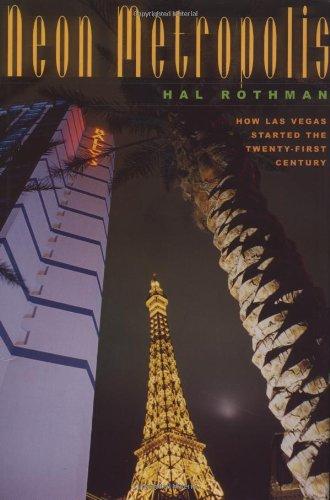Rothman, Hal. Neon Metropolis: How Las Vegas Started the Twenty-First Century. New York: Routledge, 2003. Hal Rothman’s Neon Metropolis is a colorful and absorbing account of Las Vegas’s rise from the desert landscape of the American West to the cutting edge of metropolitan growth and development. The book has three parts, titled “Making Money,” “Filling Las Vegas,” and “Building a New City.” The first chapters introduce the trends that created Las Vegas prior to 1945, including the Union Pacific railroad, the construction of Hoover Dam, the Las Vegas Gunnery School, the Nevada test site, and the arrival of mobsters. “Filling Las Vegas” extends the main themes of the first part, bringing Las Vegas from the margins of American life slowly to the center. The three chapters in this section examine more closely the changing demographics of the city, focusing on the rising Latino community, the growing numbers of people retiring in Las Vegas, the contributions of the African-American, Jewish, and Mormon communities, and the emergence of a rising professional elite. “Building a New City” then brings Las Vegas into the present, demonstrating how the city’s rampant, exponential growth has raised new and unexpected concerns for the environment; created a demand for regional partnerships for reallocating water; complicated air quality compliance and regulation; created a never-ending demand for more roads and highways, and better access to airports; and fueled a market for unprecedented suburban growth, with emphasis on master plan communities serving niche, upwardly mobile markets. Ultimately, this book makes a solid contribution to the fields of environmental and urban history. (Text adapted from an H-Net review by Victoria Garcia.)
Neon Metropolis: How Las Vegas Started the Twenty-First Century
Rothman, Hal | from Multimedia Library Collection:
Books & Profiles


